Explanation with photos of how to freeze miso soup and how to make miso balls [Carefully selected recipes]

Did you know that miso soup can be frozen?
Miso soup is an essential part of a healthy Japanese diet, but sometimes you may end up with leftovers or feel like it's a hassle to make. For such people, freezing is recommended.
If you have leftover food, you can divide it into smaller portions and freeze it for long-term storage. If you want to save time on making miso balls, we recommend making miso balls in bulk and storing them in the freezer.
Miso balls are especially convenient for people who live alone, are busy, or make their own lunch boxes.
We will not only explain how to freeze leftover miso soup and miso balls, but also explain how to make them and what to keep in mind when freezing them.
目次
Advantages of freezing miso soup
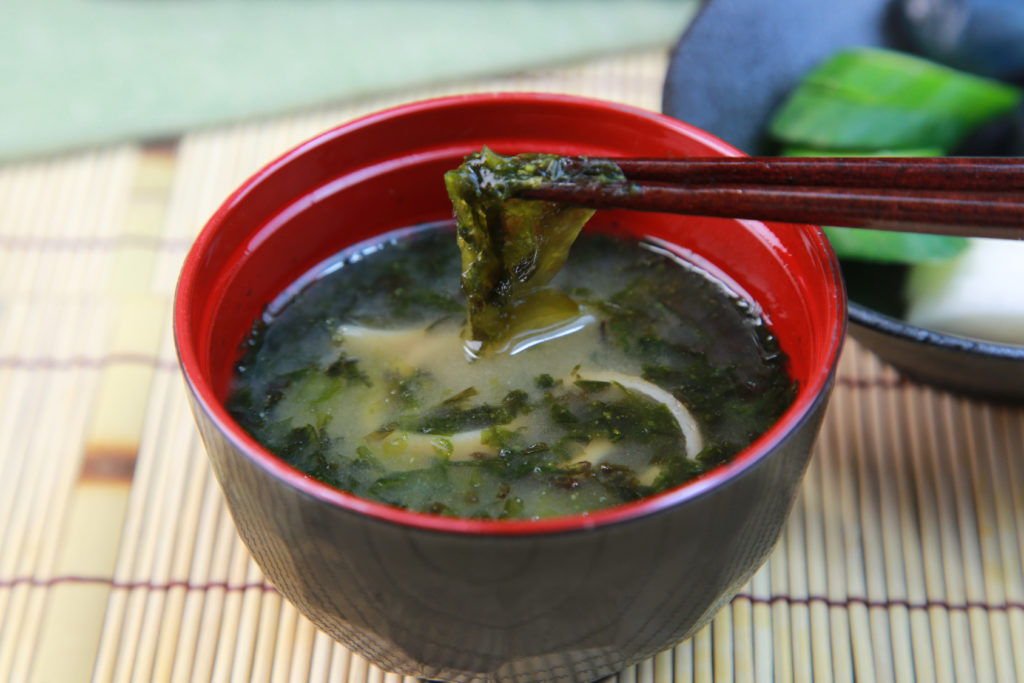
Convenient to eat right away
It is convenient to store miso soup in the freezer so that you can eat it right away. Miso soup, a representative Japanese food, is nutritious and we recommend eating it every day for your health.
For many people, it may be difficult to prepare the soup stock, cut and boil the ingredients, and dissolve the miso every morning and evening. If you find instant miso balls to be bland and expensive, but would prefer to make homemade ones, we recommend freezing miso balls. By making a large amount when you have time and storing it in the freezer, you can enjoy the homemade taste just by adding hot water.
As I mentioned at the beginning, if you want to have miso soup right away without much effort, we recommend freezing miso balls. On the other hand, let's take a look at the benefits of making too much and having leftovers in the next section.
Easy to unzip, so you can use it easily
Freezing leftover miso soup allows you to preserve it for a long time. Miso, which is a fermented food, is susceptible to bacterial growth and spoilage when water is added to it. It depends on the ingredients and the season, but it is not recommended to store it at room temperature.
I tend to make it in bulk because it takes a lot of time, but I think you might end up with some left over. If you make too much and have leftovers, we recommend dividing them into smaller portions and storing them in the freezer.
I have listed two advantages of freezing food: it saves time in making food, and it can be stored for a long time. Next, we will introduce convenient ways to freeze miso balls and miso soup with photos.
Freezing method
How to freeze it as is
1) Once the miso soup has completely cooled, put the amount you will use at a time into an airtight container such as a Tupperware or Ziploc bag.
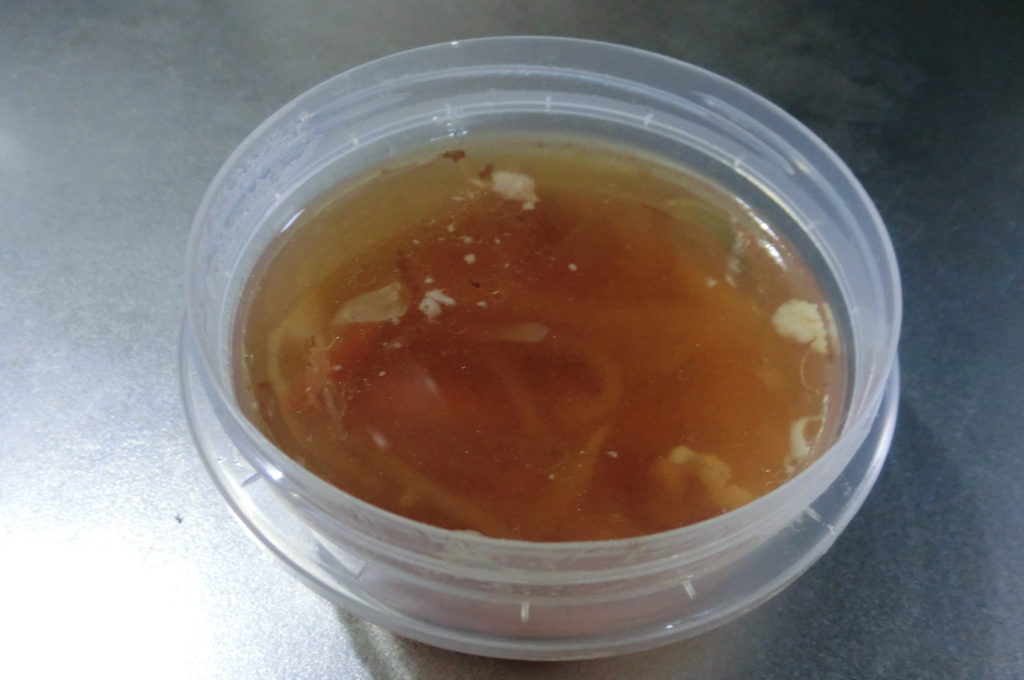
2) Store in the freezer.
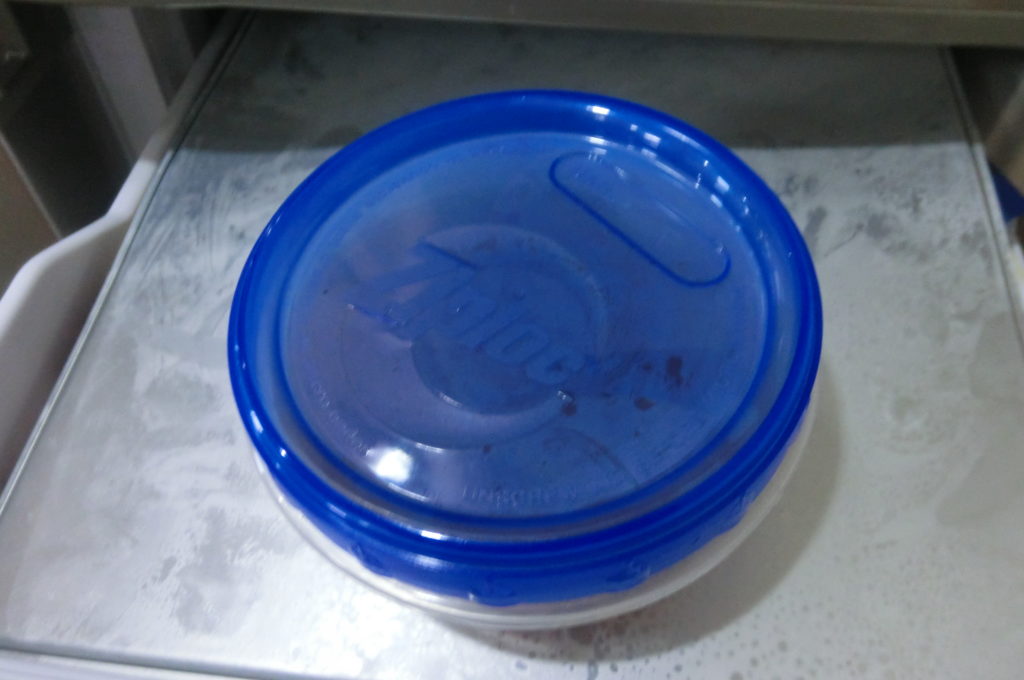
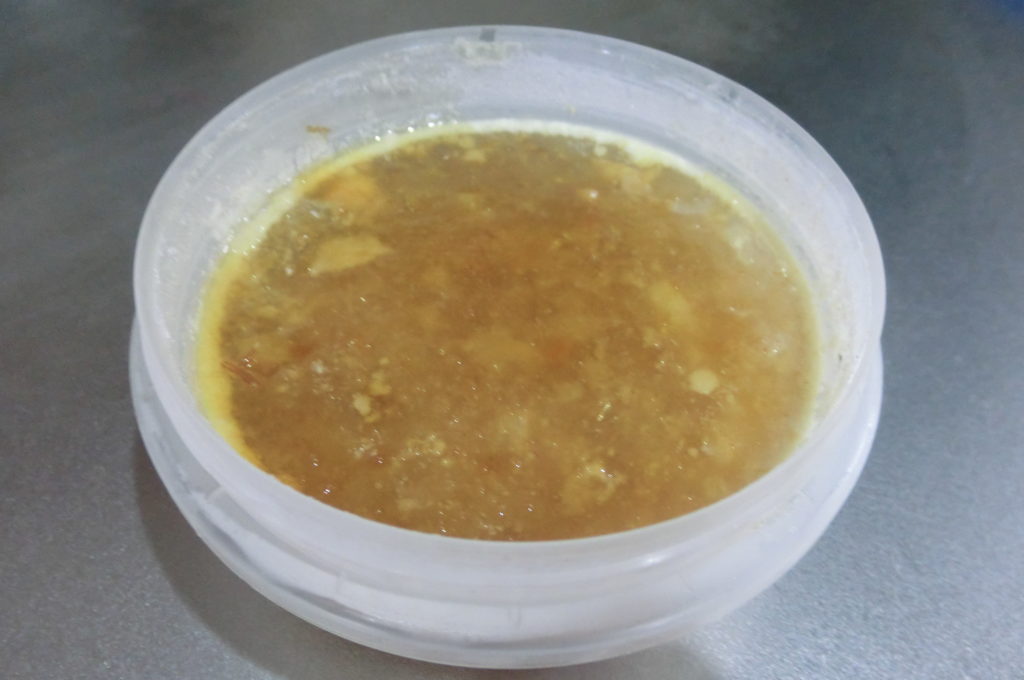
*Thaw method
1) Move it to the refrigerator about half a day in advance, or thaw it at room temperature for about an hour.
2) Transfer to a pot and reheat, or transfer to a heat-resistant container and heat in the microwave.
If you don't have time, you can also boil it in hot water in an airtight container.
How to make and freeze miso balls
1) Make your favorite miso balls. (Chapter 4 introduces a recommended method for making miso balls.)
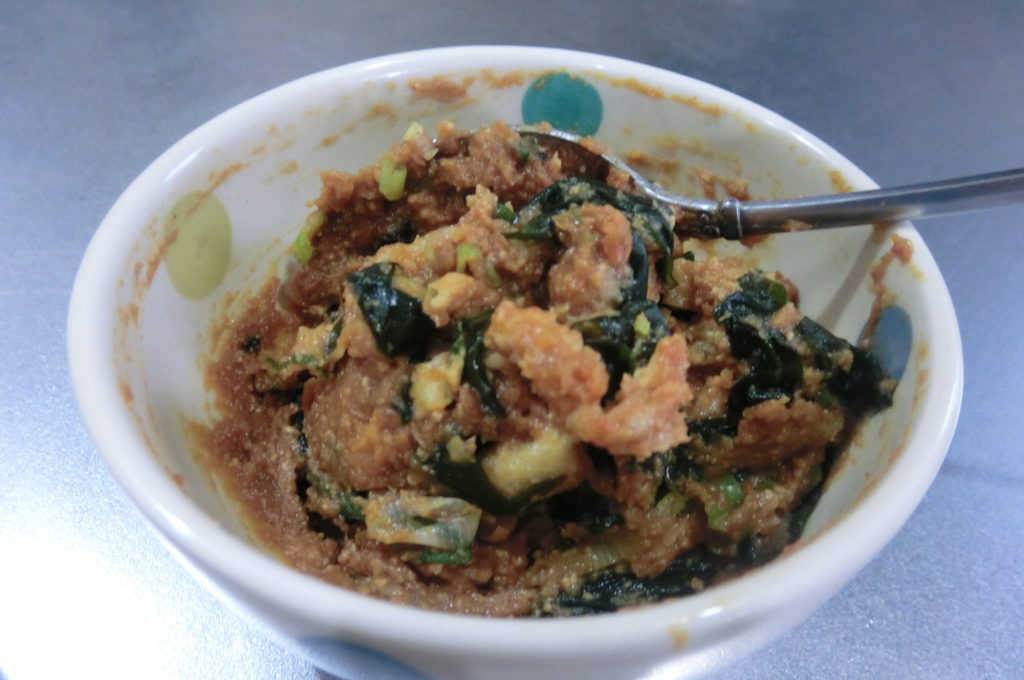
2) Wrap each serving in plastic wrap, being careful not to trap air.
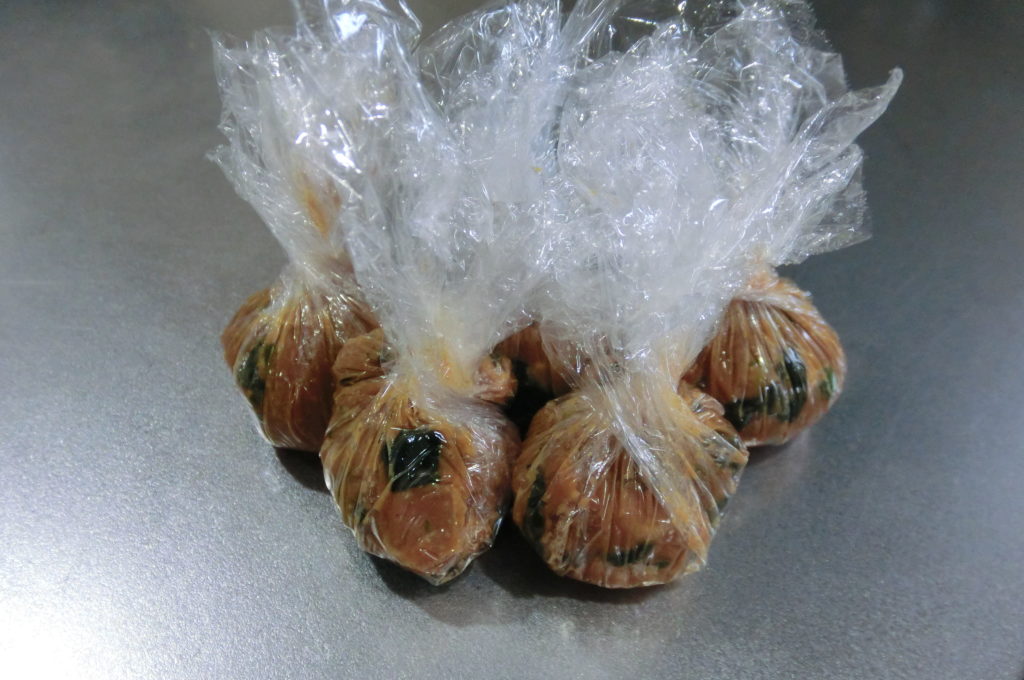
3) Store in an airtight container such as a Tupperware or Ziploc bag in the freezer.
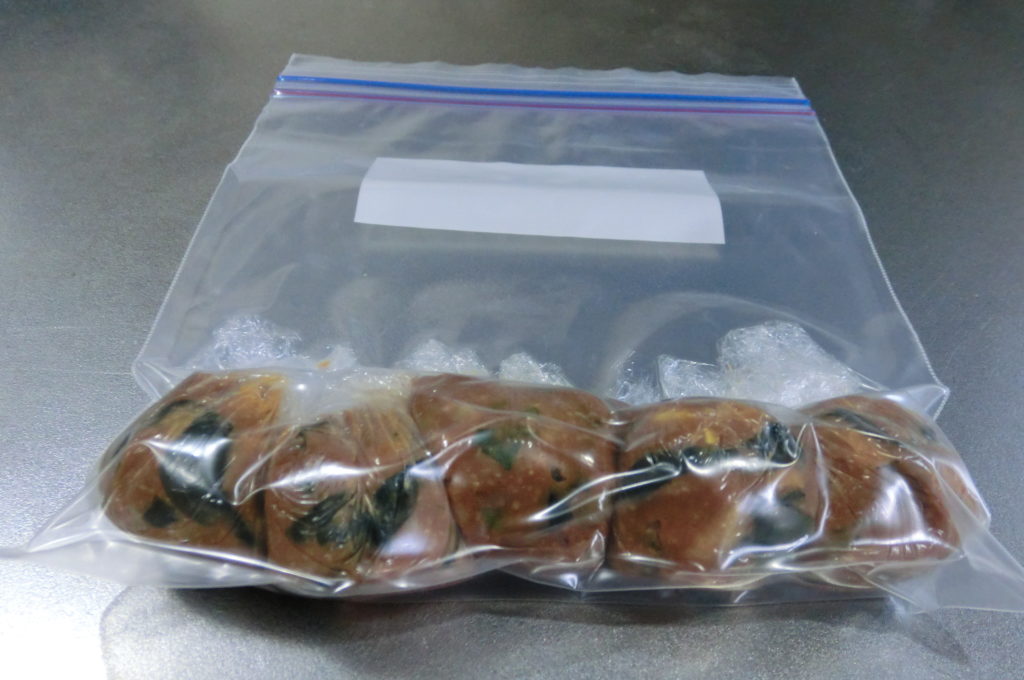
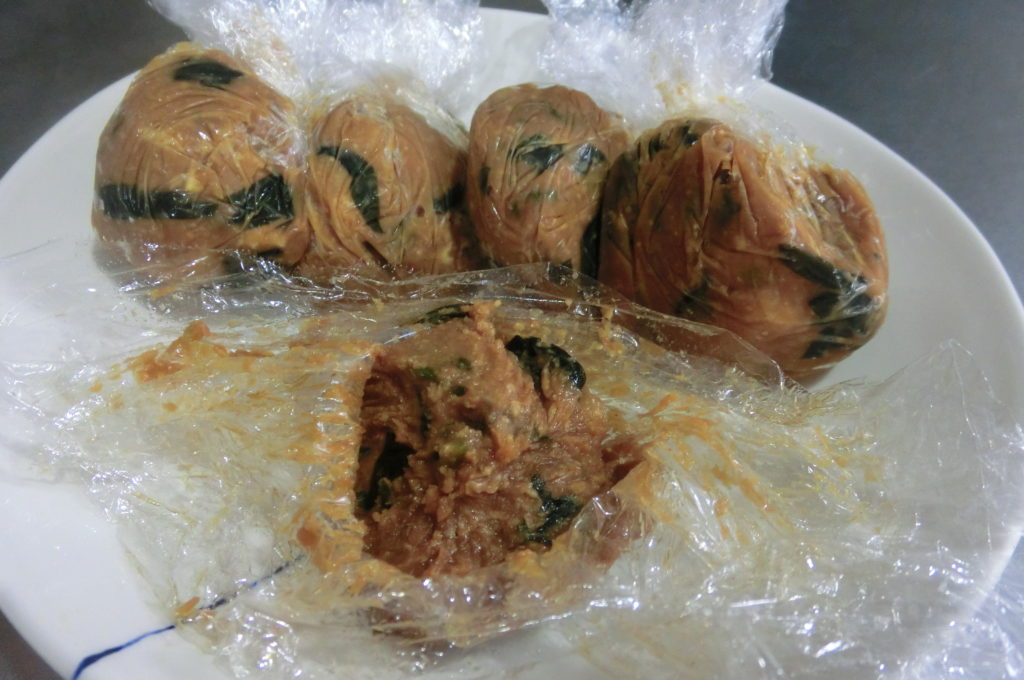
Miso doesn't freeze, so just put it in a bowl and pour boiling water over it. If you have a large amount of ingredients, let them come to room temperature a little before serving, or heat them in a low-temperature microwave to defrost them before serving.
So, what kind of miso soup and miso balls are suitable for freezing? We will introduce the recipe in the next chapter, including the ingredients you need to be careful about.
Miso soup recipes suitable for freezing
Frozen to enhance the flavor! Shijimi miso soup
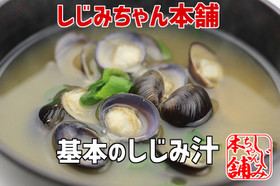
Source: https://cookpad.com/recipe/4330971
☑〈材料3人分〉
・シジミ(砂抜き済みのもの) 100~200ℊ
・味噌 60ℊ
・わけぎ 適量
・水 600㎖
<How to make>
1) Put fresh clams and water in a pot and heat.
2) When the clams open, turn off the heat and dissolve the miso.
3) Once the miso has melted, turn on the heat and turn off the heat just before it comes to a boil.
4) After serving in a bowl, top with green vegetables such as chopped green onions and it's done.
When freezing, freeze before adding green vegetables such as green onions, then add on when serving. If you want to freeze greens together, add the miso and cook before melting.
*Freezing fresh clams makes it easier to absorb the flavor components and makes them more delicious. In addition, the nutritional content of ornithine increases by eight times when frozen, so it is recommended to keep fresh clams frozen.
Freezing is recommended! Mushroom miso soup
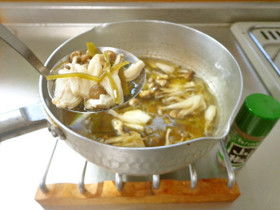
Source: https://cookpad.com/recipe/2893790
☑〈材料〉
・きのこ 半パック
・昆布 1片
・味噌 お玉半分
・水 雪平鍋半分
<How to make>
1) Spread the mushrooms in a well-ventilated area and let them dry in the sun for about an hour.
2) Fill a Yukihira pot with about half of the water, add the kelp and soak in water for about an hour.
3) Once the kelp absorbs enough water and becomes soft, cut it into thin pieces and return it to the pot.
It is convenient to use kitchen shears.
4) Remove any stones from the mushrooms and add them to the pot while tearing them apart with your hands.
5) Heat a pot over medium heat, bring to a boil, then reduce heat to low and simmer for about 3 minutes.
6) Once the ingredients are cooked, turn off the heat, dissolve the miso, and serve in a bowl.
You can also add some Japanese pepper or shichimi to your taste, or sprinkle some green onions on top to make it even more delicious.
*Mushrooms, like the freshwater clams mentioned above, can be stored frozen to break down the cells and bring out the flavor components more easily.
Freezing it will soften it, but it will also increase the flavor and make it more delicious, so give it a try.
In the next section, we will introduce ingredients that are suitable for freezing and ingredients that are not suitable for freezing, including precautions.
Precautions when storing frozen
Freezing the clams and mushrooms introduced above breaks down the cells and brings out the flavor. Root vegetables such as daikon radish and carrots are also suitable for freezing because their cells break down, softening them and allowing them to retain their flavor.
On the other hand, ingredients that are not suitable for freezing are potatoes, konnyaku, and eggs.
Avoid freezing potatoes in chunks, as the insides will become mushy. If you want to freeze something that contains potatoes, crush or remove them before freezing.
Frozen konnyaku also has a rubbery texture. If there is konnyaku in it, we recommend cutting it into small pieces or removing it before freezing.
As for eggs, if only the whites are in clumps, they are not suitable for freezing. As long as the eggs are beaten, it's okay to freeze them.
Frozen tofu has different tastes. Although it will be a bit runny, it is similar to Koya tofu, so if you like it, please try it.
instant! Miso ball recipe
The key to making miso balls is to reduce the amount of water and freeze them immediately after cooking.
Please refer to "3.3 Precautions when storing in the freezer" and try arranging the ingredients with other ingredients.
This is a classic! Simple miso balls
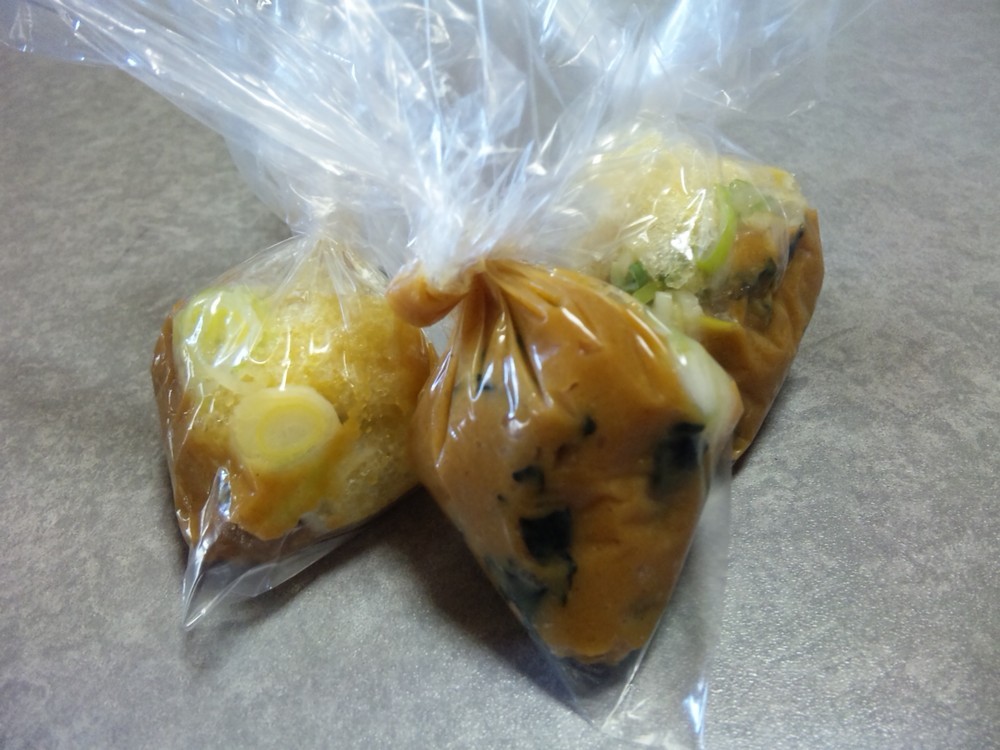
Source: https://cookpad.com/recipe/1403806
☑〈材料10個分〉
・味噌 150~180ℊ(1個分の目安は大さじ1弱です)
・長葱 1~2本
・油揚げ 1~2枚
・乾燥わかめ 15ℊ
・顆粒だし 大さじ3
<How to make>
1) Add wakame, miso, and dashi granules to a bowl and mix well.
2) Cover 1) with plastic wrap and leave for half a day until the wakame becomes soft.
3) Spread the chopped green onion on a heat-resistant plate with kitchen paper and heat it in the microwave without plastic wrap until it starts to steam.
Be careful not to burn it.
4) Cut the fried tofu into bite-sized pieces.
5) Place about 1 tablespoon of 2) on top of the plastic wrap, then put appropriate amounts of 3) and 4) on top of it, and secure the wrapper with a rubber band to prevent air from getting in. It's done.
You can use raw wakame or green onions without heating them, but the more water they contain, the faster the deterioration will occur, so be sure to eat them up as soon as possible.
Enjoy a cup! Miso balls with lots of ingredients
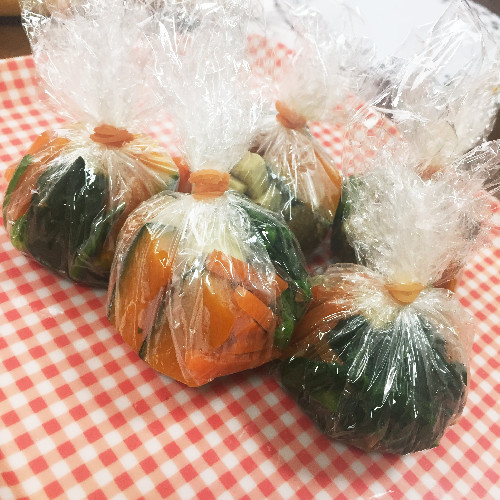
Source: https://cookpad.com/recipe/4587412
☑〈材料5個分〉
・大根 2~3cm程度
・人参 小1/2本
・ほうれん草 1束
・麩 小10個
・味噌 大さじ3と1/3
・顆粒だし 小さじ5
<How to make>
1) Add miso and dashi granules to a bowl and mix well.
2) Cut the radish and carrot into 1-2cm cubes, boil them with the spinach, and cook.
When frozen, the fibers break down and become soft, so it's okay if it's hard.
3) Soak the spinach in water, squeeze it well, and cut it into 1-2 cm pieces.
4) Place the 5 pieces of 1) and the prepared vegetables/fu on the spread plastic wrap, and secure the opening with a rubber band.
The wheat gluten is dry and can be stored for a long time, so you can put it in a bowl when you eat it.
Conclusion
How do you freeze miso soup?
Miso soup that tends to be leftover is easily perishable, so you can freeze it by placing individual servings in airtight containers such as Tupperware or Ziplock. If you live alone or want to easily enjoy miso soup for lunch, we recommend freezing miso balls.
Ingredients that benefit from freezing are bivalves, mushrooms, and root vegetables. However, be careful when storing potatoes, konnyaku, eggs, and tofu in the freezer.
Please try the freezing method to easily have hot, nutritious miso soup on your daily table.








![[Storage period increased by 30 times! ] Achieving a stable supply of raw whitebait!](https://shunkashutou.com/wp-content/uploads/2016/11/579c55e6d32e1385c250e8e7c3ed59a71.jpg)
![[Sales increased 100 times! ] rapid freezing the signature menu “Ni-katsu sandwich”!](https://shunkashutou.com/wp-content/uploads/2016/11/IMG_02391.jpg)
![[Horse sashimi] We have significantly reduced waste loss with rapid freezer!](https://shunkashutou.com/wp-content/uploads/2016/11/5fda59d0cbcdabde18e58c3c58c09ed0.jpg)




![[Storage period increased from 3 days to half a year! ] Restaurants are expanding their business using wholesale and mail order!](https://shunkashutou.com/wp-content/uploads/2018/04/66c19942ab4ba346fdb64ccc04cde373.png)
![[Reduce loss from 200 kg of oysters to zero] Improve loss and expand business with rapid freezer](https://shunkashutou.com/wp-content/uploads/2018/06/19785ca583a8d3c4041c7c192d041b0d.jpg)














![[Can it be frozen? ] Introducing recipes and methods for freezing avocados!](https://shunkashutou.com/wp-content/uploads/2023/07/7b25b2d45ff983fca2a15b6ad7edf369-1.jpg)
![[Explanation of how to bake! ] How to freeze gyoza, storage period, and arranged recipes](https://shunkashutou.com/wp-content/uploads/2023/09/c3dca78e4f555cfbcfe88d6e13b19bba.jpg)
![Introducing recipes and methods for freezing spinach [Explanation with photos! ]](https://shunkashutou.com/wp-content/uploads/2023/10/spinachh-768x512-1.jpg)
![[It's good to know! ] Introducing how to freeze curry, how long to keep it frozen, and how to thaw it |](https://shunkashutou.com/wp-content/uploads/2023/08/5de5495c896622dc896a8f23d9528300.jpg)
![[Explanation with photos] How to freeze winter melon, storage period, and 5 recipes!](https://shunkashutou.com/wp-content/uploads/2023/10/8c301e3fcfbb9c7f457d8b05dfea902d.jpg)
![[Can it be frozen? ] Introducing how to freeze ham and delicious recipes!](https://shunkashutou.com/wp-content/uploads/2023/09/867d7b924bf17d95bedba60a6503e00e.jpg)
![How to freeze celery, nutrition, and 5 recipes! [Explanation with photos! ]](https://shunkashutou.com/wp-content/uploads/2023/09/serori-768x512-1.jpg)
![[How to use leftover sashimi! ] Introducing frozen preservation methods and arrangement recipes](https://shunkashutou.com/wp-content/uploads/2023/10/7451dbe2231dbc559fe002350b8add67.jpg)
![Introducing the method and recipe for freezing shimeji mushrooms [Explanation with photos]](https://shunkashutou.com/wp-content/uploads/2023/09/shimeji-768x510-1.jpg)
![[Explanation with photos! ] How to freeze saury, storage period, and 5 recipes!](https://shunkashutou.com/wp-content/uploads/2023/10/fff0f92d808aca2392b3eb576f218f08.jpg)
![[Explanation with photos! ] How to freeze and fry croquettes, 5 carefully selected recipes](https://shunkashutou.com/wp-content/uploads/2023/09/b364ee97a71777f9dd2e35fddbbdda72.jpg)
![How to freeze tomatoes, storage period, and 5 recipes! [Explanation with photos! ]](https://shunkashutou.com/wp-content/uploads/2023/10/tomato-768x513-1.jpg)
![[Supervised by a nutritionist! ] How to freeze bean sprouts, storage period, and 5 recipes!](https://shunkashutou.com/wp-content/uploads/2023/09/34f4d39c30e79629a89bf54221841964.jpg)
![[Explanation with photos! ] How to freeze butter, storage period, and 5 recipes](https://shunkashutou.com/wp-content/uploads/2023/08/4e4d4fde2efeae3d997d4356f1cc75c1.jpg)
![Introducing how to freeze fried chicken and a delicious recipe [Explaining tricks and techniques]](https://shunkashutou.com/wp-content/uploads/2023/09/2d15a108b8d7de5b4811f69c9bc8b8f1.jpg)
![[Can it be frozen? ] How to freeze mashed potatoes, how long they can be stored, and how to use them](https://shunkashutou.com/wp-content/uploads/2023/09/b7f3f25102051473b7c2f9452840a6f4.jpg)
![[Be good at saving money! ] Introducing the method and recipe for freezing fried rice](https://shunkashutou.com/wp-content/uploads/2023/10/mayo-tyahan-1024x768-1.jpg)

![[Explanation of how to fry! ] How to freeze and thaw pork cutlet, remake recipe!](https://shunkashutou.com/wp-content/uploads/2023/10/0a4143ad8ea0cc6bb6fdab8c74fab407.jpg)

![[Freezing boiled food] rapid freezing demo](https://shunkashutou.com/wp-content/uploads/2016/10/4739208abfe6e2e63a43347c1598e991.webp)
![[Can it be frozen? ] Introducing the recipe and how to freeze potato salad!](https://shunkashutou.com/wp-content/uploads/2023/10/3c640cd23d65764c14f701d25970ed59.jpg)
![[Labor shortage]The benefits with examples of using rapid freezer](https://shunkashutou.com/wp-content/uploads/2019/04/hitodebusoku-article-main_pc.jpg)
![[Tips for making egg rolls that can be frozen] Introducing freezing methods, storage periods, and recipes!](https://shunkashutou.com/wp-content/uploads/2023/10/tamagoyaki-768x512-1.jpg)

![[Nutrition remains the same! ? ] Introducing how to use frozen vegetables and recommended recipes](https://shunkashutou.com/wp-content/uploads/2023/10/vegetables-reito-1-1-768x511-1.jpg)
![[With photos] Lemon freezing and storage period, recipes for how to use frozen lemons](https://shunkashutou.com/wp-content/uploads/2023/09/21a01b705aff194717e200bf6dc6ce5b.jpg)
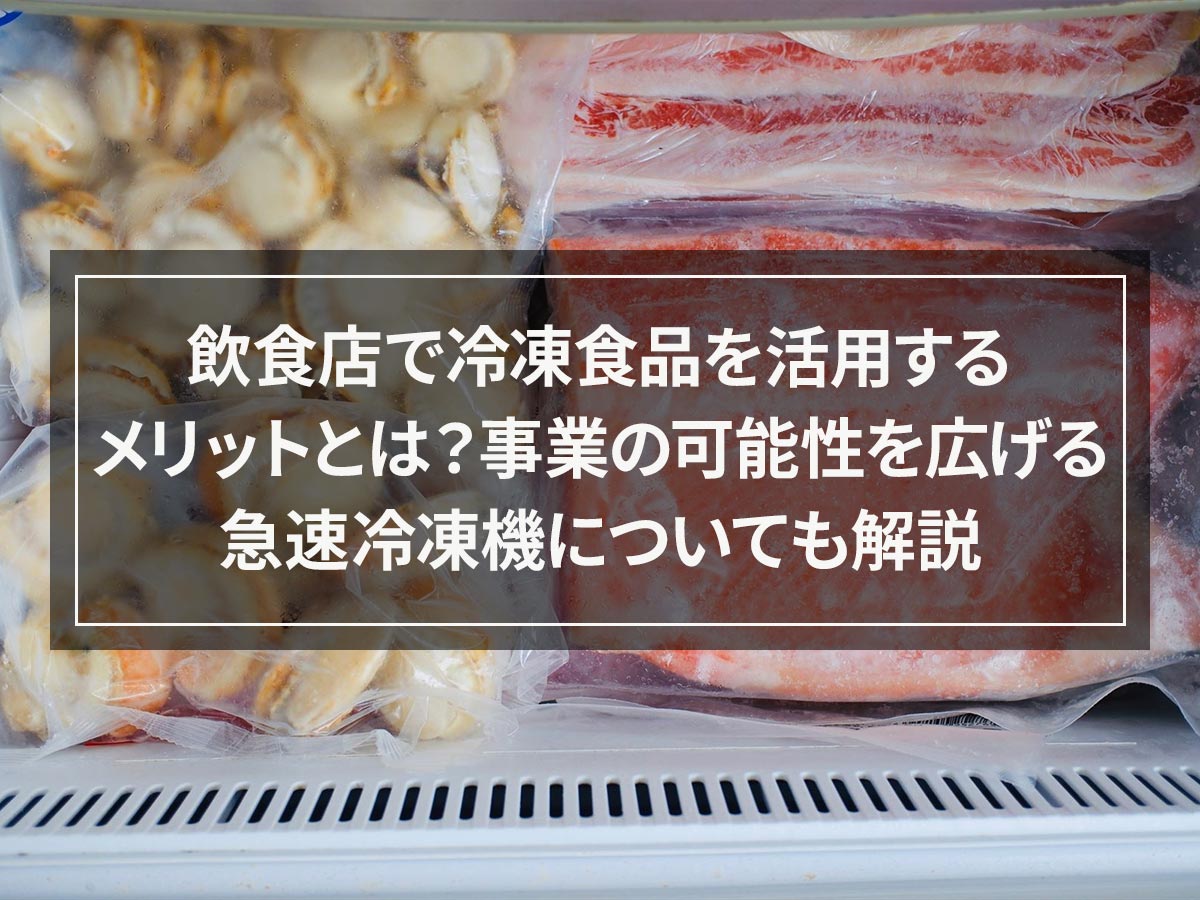
![[Can it be frozen? ] How to freeze cabbage rolls, storage period, and recipe](https://shunkashutou.com/wp-content/uploads/2023/10/f5c1db9a17ef7843ffd45f5ccb160ed5.jpg)
![[Introducing trick techniques! ] How to freeze and thaw pancakes](https://shunkashutou.com/wp-content/uploads/2023/09/4f2e9d04709f0c4e5c1769985a49ac8b.jpg)
![How to freeze and thaw chestnuts, storage period, and 5 recipes! [Explanation with photos]](https://shunkashutou.com/wp-content/uploads/2023/09/c590a9e6fb16ed45fe2fdd32813de03b.jpg)

![How to freeze sweet potatoes, storage period, and 5 recipes! [Explanation with photos! ]](https://shunkashutou.com/wp-content/uploads/2023/10/36256af24531b73a036523ba73bdf9ec.jpg)

![[Can it be frozen? ] Introducing how to freeze kamaboko and how to remake it](https://shunkashutou.com/wp-content/uploads/2023/09/6d2830823df2896a1601685353b0fdf5.jpg)
![Explaining how to freeze garland chrysanthemums with photos! [Defrosting and storage period, 5 recipes]](https://shunkashutou.com/wp-content/uploads/2023/10/syungiku-catch-768x512-1.jpg)

![Thorough explanation of how to freeze eggplant and its storage period! [Explanation with photos! ]](https://shunkashutou.com/wp-content/uploads/2023/08/03fe8d79948a39047616383e2d3fb64a.jpg)
![[Explanation with photos] How to freeze octopus, storage period, and 5 recipes!](https://shunkashutou.com/wp-content/uploads/2023/10/5128a2b3fa3cc254cffab87821372215.jpg)

![How to freeze delicious strawberries and 5 recipes! [Explanation with photos! ]](https://shunkashutou.com/wp-content/uploads/2023/09/1509eaf30e7a2fc1b5bbc88ae15a4034-1.jpg)
![How to freeze mushroom mushrooms, storage period, and 5 recipes! [Explanation with photos! ]](https://shunkashutou.com/wp-content/uploads/2023/09/4b6ffe2ef040e90085b4ee4f0c3e72a9.jpg)
![[8 times more nutrition! ] Introducing how to freeze clams, storage period, and 5 recipes](https://shunkashutou.com/wp-content/uploads/2023/10/57204e2a2f115f810e29e365cfc86638.jpg)
![[Is it more nutritious than raw? ] Introducing recipes and how to preserve frozen blueberries](https://shunkashutou.com/wp-content/uploads/2023/07/bdc074d8bfa2dc63c2c7bf92dc1dd07d.jpg)
![Explaining how to freeze tempura with photos! [Storage period, thawing, carefully selected recipes]](https://shunkashutou.com/wp-content/uploads/2023/10/51f33cde78d02d01a9e827132e4f069d.jpg)
![[Can it be frozen? ] How to freeze and thaw okonomiyaki, arrangement recipe!](https://shunkashutou.com/wp-content/uploads/2024/01/58bc763c02f23a2a6442d6449853a67b.jpg)
![Introducing how to freeze/thaw salmon roe and how long to store it [includes carefully selected recipes]](https://shunkashutou.com/wp-content/uploads/2023/09/236b884b68d07d2f5983f2b9ea66583d.jpg)
![[Can it be frozen? ] How to freeze milk, storage period, and 5 recipes!](https://shunkashutou.com/wp-content/uploads/2023/09/d0390cbc7a5e9a76c11d5b9eff3b4a5b.jpg)
![Introducing recipes and methods for good frozen preservation of okra [Explanation with photos! ]](https://shunkashutou.com/wp-content/uploads/2023/10/616c25d6c59f80c7a09effe2edc5ef92.jpg)
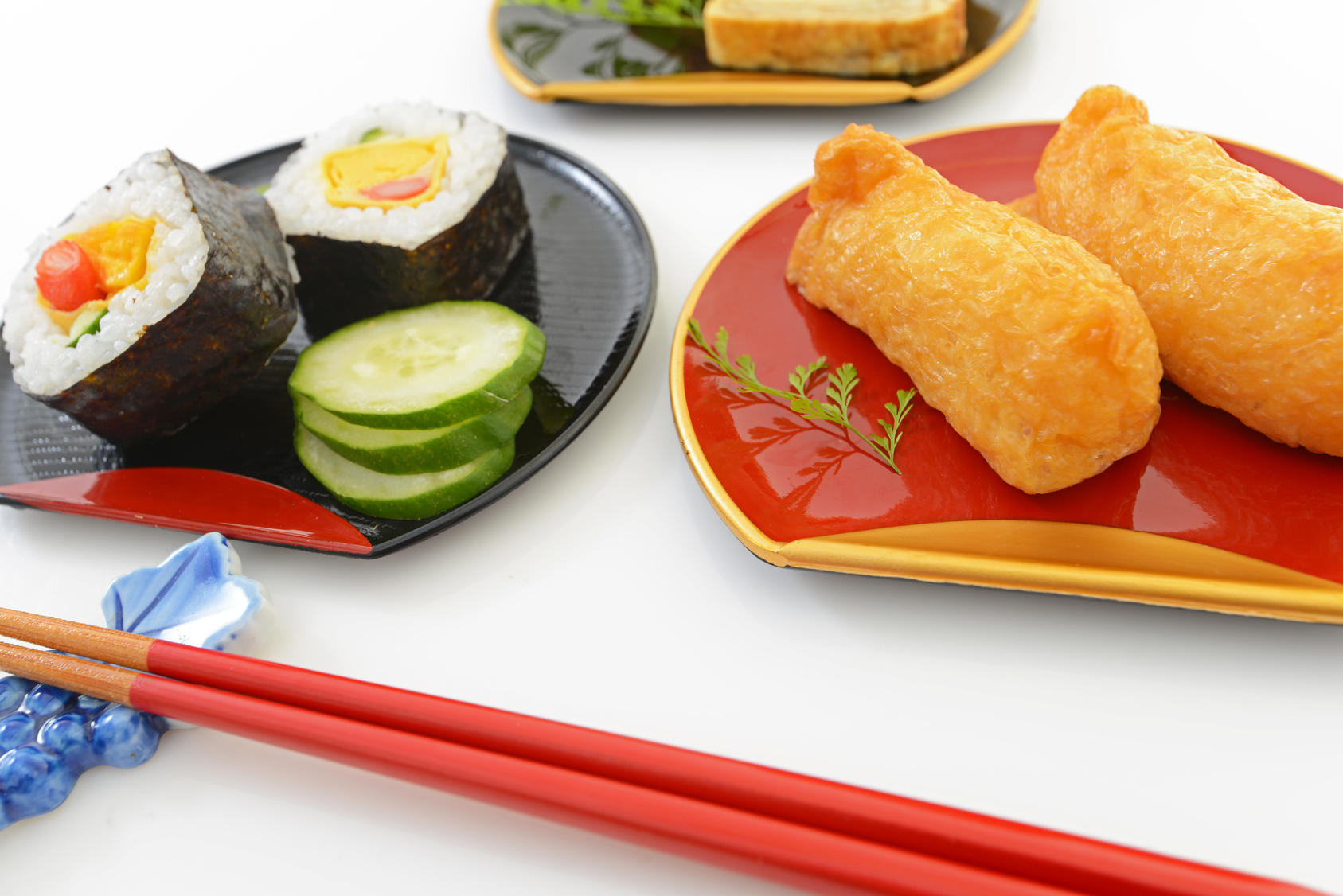
![[Can it be frozen?] Stew freezing method, storage period, and arrangement recipe](https://shunkashutou.com/wp-content/uploads/2023/10/f599b814ea21eef57604e4ceb2518d5b-1.jpg)

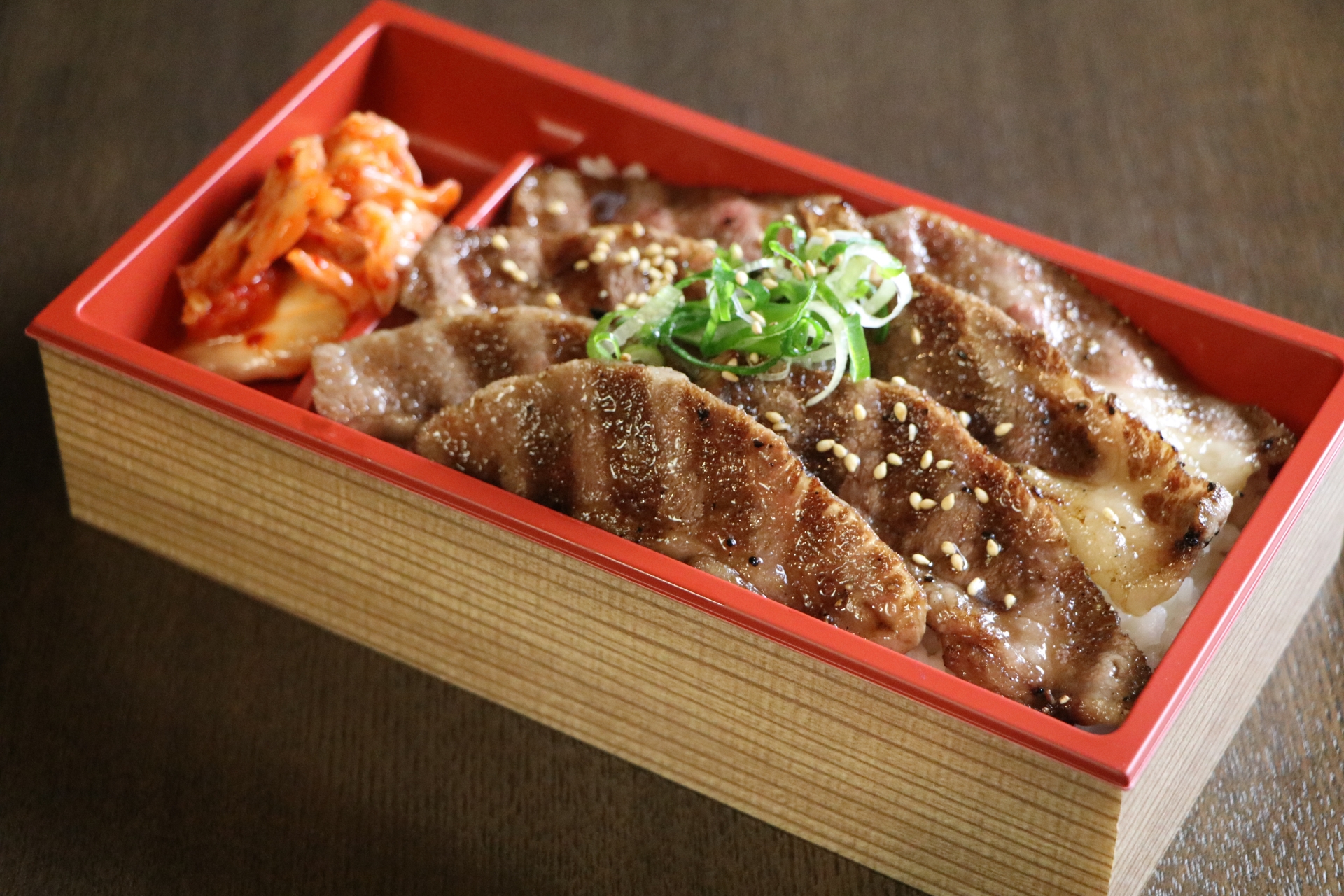
![[Includes grilling instructions] How to freeze hamburger steak, storage period, and carefully selected recipes!](https://shunkashutou.com/wp-content/uploads/2023/09/eb3a531f7fd023f973240f698c092b64.jpg)

![[Explanation with photos] How to freeze meat sauce, storage period, and 5 recipes!](https://shunkashutou.com/wp-content/uploads/2023/09/efa7161a08e57ef763d9e19623c7669c.jpg)
![[Freezing pickles] rapid freezing demo](https://shunkashutou.com/wp-content/uploads/2016/09/54443af8b86c85071ce9c09d80430b9a.webp)
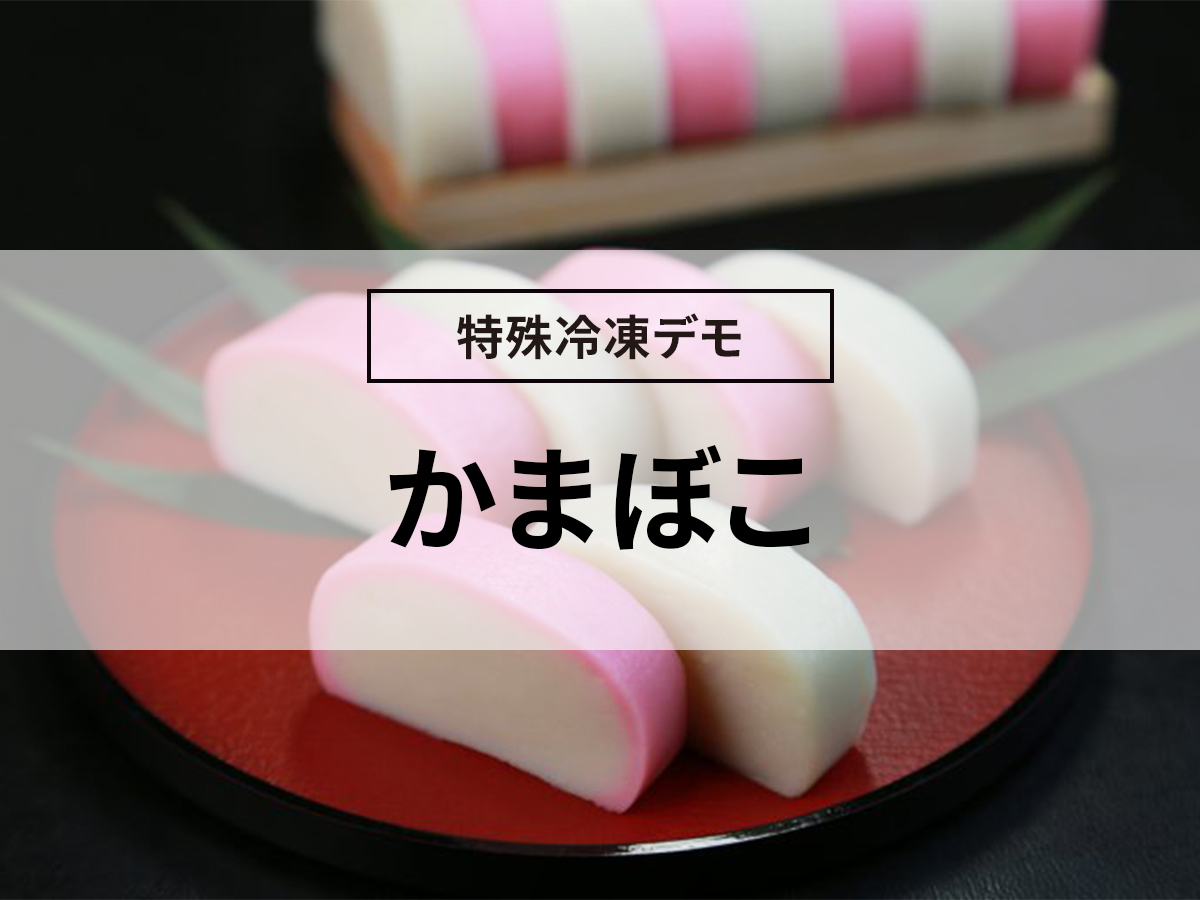
![How to freeze apples and what is their nutritional value? Perfect for baby food! [Explanation with photos! ]](https://shunkashutou.com/wp-content/uploads/2023/10/cf0380a4b371d2f43e0f0ed99c7344a2.jpg)
![[Explanation with photos! ] How to freeze green beans, storage period, and 5 recipes](https://shunkashutou.com/wp-content/uploads/2023/09/f3dbbe5b1d05a50f514a833efdceced9.jpg)
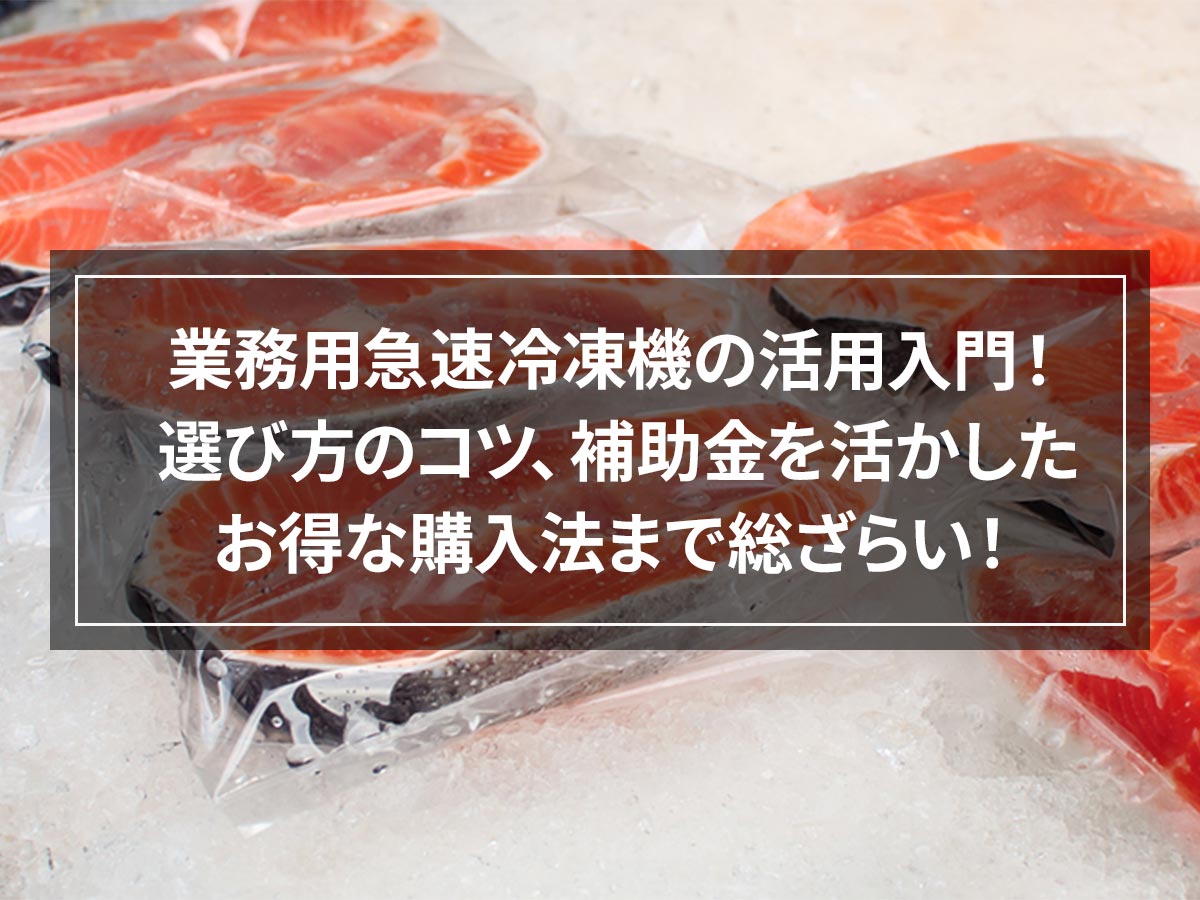
![[Solving issues in the retail industry] Liquid freezing machines that should be introduced in supermarkets](https://shunkashutou.com/wp-content/uploads/2015/09/60172f0f261fd750c4016165c3c56cc8.jpg)
![[Introducing case studies as well!] 5 reasons why curry restaurants should install rapid freezer](https://shunkashutou.com/wp-content/uploads/2016/09/2a0deb9a6db53165f0a4938bc80cee46.jpg)
![[Explanation with photos! ] How to freeze pork, expiration date, and 5 recipes!](https://shunkashutou.com/wp-content/uploads/2023/10/8688cd28f298c3180c30169cec815293.jpg)
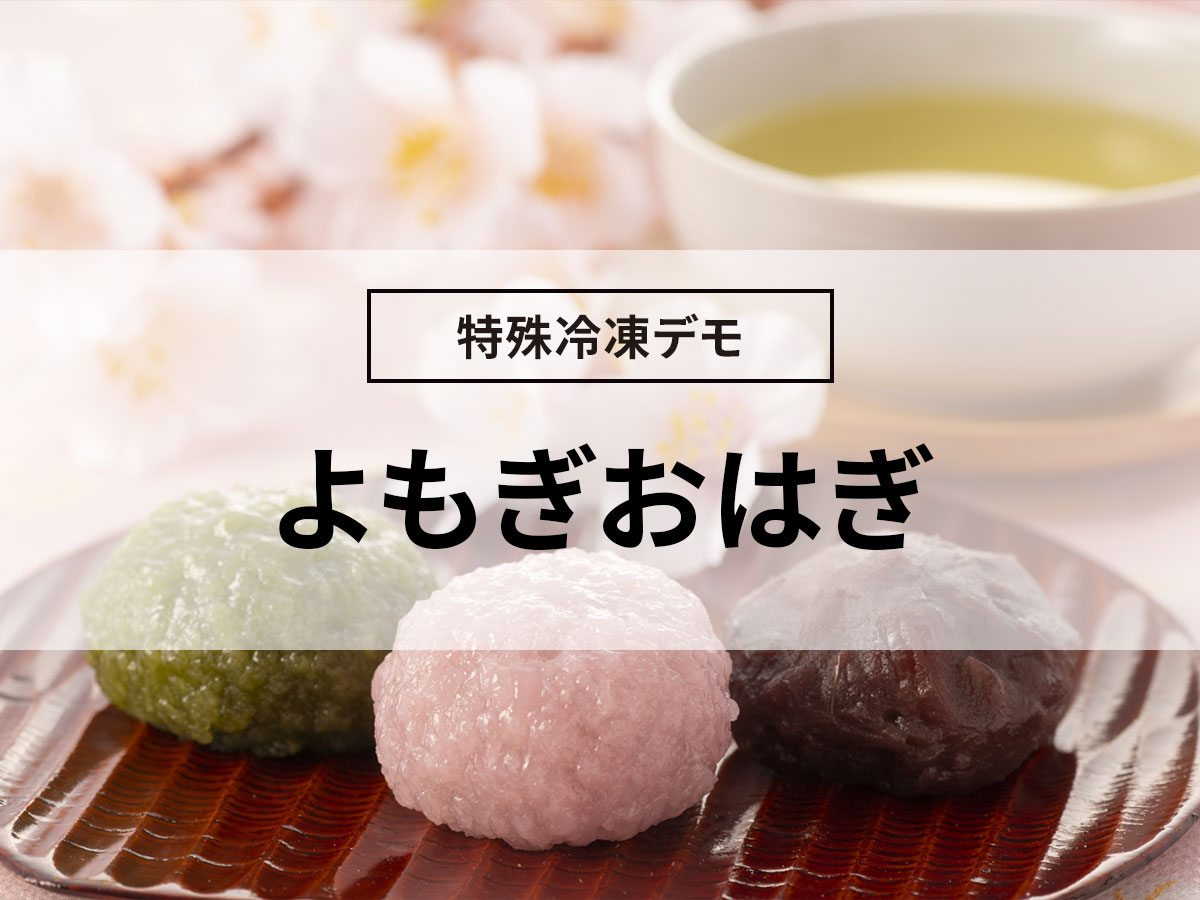

![[Convenient for lunch boxes! ] How to freeze fried noodles and 5 different recipes](https://shunkashutou.com/wp-content/uploads/2023/10/yakisoba-768x512-1.jpg)

![[Introducing tricks and time-saving techniques! ] How to freeze ginger-yaki, carefully selected recipes](https://shunkashutou.com/wp-content/uploads/2023/10/ef145c31655c5774469e05b5e892207b.jpg)

![How to freeze mizuna and 5 recipes! [Explanation with photos! ]](https://shunkashutou.com/wp-content/uploads/2023/09/b22c59559b7316b40d35d2555434791e.jpg)
![[Dramatically extends the shelf life of vegetables! ] What is blanching process?](https://shunkashutou.com/wp-content/uploads/2023/07/8fce721a563a0e86a740b4d11dc63766.jpg)
![Introducing the frozen preservation method and recipe for bamboo shoots [Explanation with photos! ]](https://shunkashutou.com/wp-content/uploads/2023/07/4c47b443710cb5788386ab6fd1fa0a07.jpg)
![[Explanation with photos! ] How to freeze hijiki and its storage period, 5 recipes!](https://shunkashutou.com/wp-content/uploads/2023/09/ff6bdc527dd066b7d725a48161d7925d.jpg)




